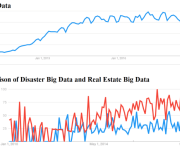Real Estate 101: What is Capitalization Rate (Cap Rate)?
Based on multiple surveys among real estate investors, more than 65% have ranked capitalization rates as their top priority. They believe it is crucial to consider cap rates when reviewing and assessing real estate investments. Having an understanding about cap rates’ basics and how they affect investment strategies are essential things that property investors need to do. Also, if you want to trade assets in the market well, then having an idea about what is a good cap rate will certainly come in handy. In this article, we’ll cover what exactly a cap rate is, why it’s an important metric for investors, how to calculate it, and ranges of a good cap rate.
Cap Rate Definition
It’s important for investors to remember that when they put money into commercial property, they are investing in an income-generating business. This means that the amount of return a property will give back (or its risk level) is also a reflection of how much money went into it — not just what the owner paid for it initially. A cap rate is a way to quickly look at an asset’s risk and quality.
Importance of Cap Rate
Capitalization rates are seen as a measure of risk and return: a “low” cap rate of 3-5% indicates the asset is lower risk and higher value, whereas a “higher” cap rate of 8-10% indicates a lower price, higher risk, and higher return. For example, if a buyer purchases a property with all cash and the property distributes the same net operating income, the buyer would receive a 7% return on their investment.
The Capitalization rate does not consider any mortgage. It is most useful in a market where sales often occur, allowing buyers to use comparable sales of stabilized assets to determine if the price is reasonable relative to other sales.
Now that you have understood what is a cap rate, let’s find out how it is calculated.
Calculation of Cap Rate (With Example)
Real estate professionals commonly use capitalization rates because they are a quick and easy way to calculate relative value. The cap rate is determined by taking the property’s net operating income (the gross income less expenses) and dividing it by the asset’s value.
The formula is of the Cap rate.
Capital Rate= Net operating income / Current market value (Sales price) of the asset”
For example, if a buyer is looking at an apartment building with ten units, each renting for $2,000 a month, the property brings in $20,000 or $240,000 a year. After subtracting $96,000 in expenses, the net operating income (NOI) is $144,000. In a market with a 7% capitalization rate (cap rate), the buyer can divide the $144,000 by 7% to find a fair purchase price of about $2,057,143. If the seller lists the property for $2,060,000 and shows a 12-month profit and loss statement with $144,000 in NOI, the buyer can see that the property is being sold at a 7% cap rate, making it easier to compare with other similar properties.
How Cap Rate is Used in Real Estate
After discussing what a cap rate is,now let’s have a look at how it is being used in real estate:
Determining Property Value
The Capitalization rate is a metric that buyers use to compare the price of an asset with other similar properties sold in the last six months or longer. It helps track market trends over set periods. Buyers can determine if they are getting a good deal on a property by comparing the cap rate to prior sales prices of similar properties. Brokers and sellers also use cap rates as a sales tool to attract buyers by transparently showing how they priced the asset and highlighting the asset’s potential yield.
Refinancing Estimation
Capitalization rates are not only used to determine an asset’s purchase price. They can also estimate a property’s value quickly when considering a refinance. If a property owner wants to refinance, they may need an estimated value to determine the potential loan amount the property supports using the lender’s loan-to-value (LTV) metric. Once the estimated value is calculated, the owner can decide if a refinance is possible or worthwhile.
Projecting Returns
Some buyers use future estimated Capitalization rates to model the projected return of a property before it is purchased. A financial model, typically created in Excel, estimates a project’s projected return profile and determines if it meets the buyer’s return targets based on certain assumptions. The model includes inputs such as purchase price, closing costs, senior debt, projected income, and expenses with growth over the anticipated hold period, as well as a projected exit price and potential profit.
Conclusion
Hopefully by now you have a decent grasp of what cap rate means, as well as how you can use it when making investments in real estate. If you’re still feeling unsure or uncomfortable with the topic, it may be helpful to work with professionals who specialize in buying/selling properties — they can provide data on lots of recent sales & current listings so that you have even more information before making up your mind about whether or not (and where) to invest next.
























